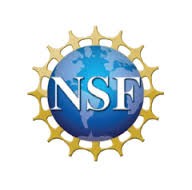
Tristate Teachers Pack Innovation in Classes
Local middle and high school teachers from 14 surrounding school districts have teamed up with the University of Cincinnati in search of better methods for teaching the difficult topics of math and science.
Due to their sometimes overwhelming content, science and math can be challenging subjects to teach. The Cincinnati Engineering Enhanced Mathematics Program (CEEMS), funded through a $9.2 million grant from the National Science Foundation (NSF), is connecting the dots between real-world applications of math and science and classroom curriculum, with a specific focus on engineering.
Teachers from all over the tri-state dedicate themselves back to the classroom at the University of Cincinnati for 7 weeks over two summer breaks. During their time at the Summer Institute for Teachers (SIT) they learn and develop new ways of teaching STEM (Science, Technology, Engineering and Mathematics) principles, including the engineering design process through challenge-based learning.
Over the course of each summer they develop three units which they implement in the upcoming academic year, all of which are tailored to their specific subjects.
At the end of the summer, the local educators are equipped with new strategies for teaching and a vigorous lesson plan that is sure to get the students engaged.
The Closing Showcase wraps up the summer as teachers display their posters explaining their three planned units. Each poster, as unique as the teachers themselves, is detailed and stimulating.

James Chilcote, Clark Montessori
James Chilcote from Clark Montessori teaches seventh and eighth grade math and science. For his second and final year in the CEEMS program he plans to inspire his students with three units he thinks will be both practical and educational.
His third unit, which involves building a bug catcher out of household items, coincides with an annual school trip to the Caribbean where the students will be able to test their contraptions first hand.

James Copeland, Hughes High School
Another CEEMS participant, James Copeland teaches Biology at Hughes High School. James says he is most excited about his second unit which requires his students to make their own solar powered phone charger. James enthusiasm stems from his students who he says will be most excited about the charger due to its practical use.
As a teacher, getting excited about the things that motivate your students is the sign of a true professional and team player.

David Macmorine's poster, School for Creative and Performing Arts
Calculus and pre-calculus teacher at the School for Creative and Performing Arts (SCPA), David Macmorine, also takes his students interests into consideration when developing his three units.
Because the students of SCPA are regularly immersed in music, sound, and lighting, David has incorporated these three elements into his units for the year. He understands calculus is often a difficult course and says he wants to shake up the normal math class.

Karen McDonough, Batavia Schools
Karen McDonough from Batavia schools is looking forward to implementing her units in her either grade math class.
Karen has found a way to get her students involved in community-wide issues such as solving erosion problems in dam removal.
She also brings whimsy to her classroom with a carnival themed unit in which she plans to challenge her students to both design and rig carnival games. She then plans to bring in younger students to play the games in a fun-filled carnival like atmosphere- cotton candy and all.
Further action is required to make this image accessible
One of the below criteria must be satisfied:
- Add image alt tag OR
- Mark image as decorative
The image will not display on the live site until the issue above is resolved.
Kevin Tucker, who teachers eleventh and twelfth grade math at Princeton High School, is excited to introduce his students to some of his passions this year. Kevins first unit involves creating an automated belay system. In order to get his students fired up about the project, Kevin plans to take the class on a trip to Rock Quest where they will have the chance to use an automated belay system on the rock wall.
Kevins passion for rock climbing was surely an influence on his unit design and is the reason for his enthusiasm for unit one. Kevin hopes to expose his students to some new experiences and broaden their outlook as he shares his personal interests.
The CEEMS program is in its third year of a five year grant. Cohort one has already graduated from the program and continues to use their innovative lesson plans in the classroom. As the program continues to challenge local teachers to push the boundaries of traditional teaching methods, tri-state schools continue to strengthen.
The impact on students can clearly be seen in the classroom as they learn to engage and interact with previously difficult subjects. This extra preparation in class funnels more students into areas of engineering, math, and science for post-secondary education, all thanks to the dedicated teachers who have commit themselves to excellence.
Related Stories
OTR mural centerpiece of 'big' celebration of UC alumni
April 26, 2024
New downtown artwork salutes 18 alumni award recipients who personify UC’s alumni success.
UC education allowed couple to make mark on Cincinnati
April 24, 2024
As a native of Defiance, Ohio, John Deatrick, CEAS ’79, says arriving in Cincinnati to attend the University of Cincinnati in 1963 felt like landing in New York City.
Engineering student studying flight physics of birds
April 24, 2024
After earning a bachelor's degree in mechanical engineering in Nepal, Sameer Pokhrel came to the United States to further his education. From an early age, he had a lifelong fascination with aviation. As an adult, he transformed this fascination into a career, pursuing a doctoral degree in aerospace engineering at the University of Cincinnati's historic program. Here, he has succeeded in research, instruction, and was recently named Graduate Student Engineer of the Month by the College of Engineering and Applied Science.
